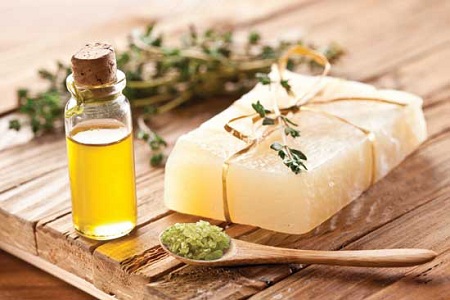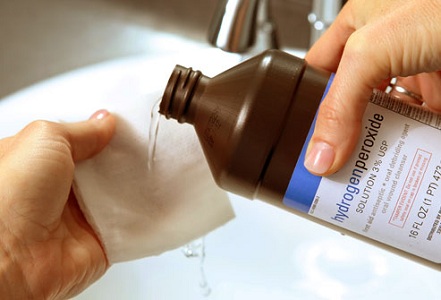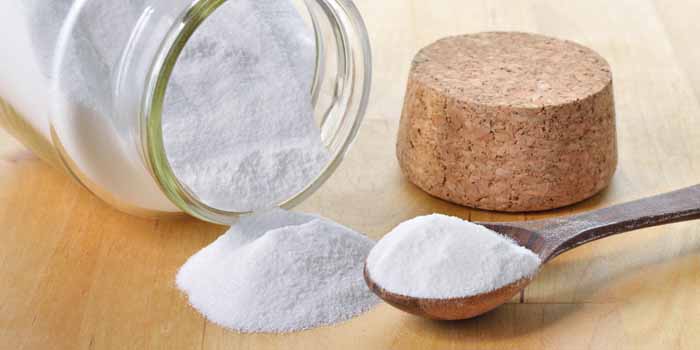Fungal skin infection is readily transmitted from one person to another. The problem is compounded by the many different skin fungus infections, including ringworm, athlete's foot and jock itch. In most cases, fungal skin infections present with rashes, itching, flaking skin, redness and even bleeding. Once treatment commences, most skin fungal infections are cleared within two weeks. However, if the skin condition does not improve, you need to consult a dermatologist for further advice and treatment.
How to Kill Fungus on Skin with Home Remedies
1. Proper Hygiene
 Keep the affected area clean by washing with soap. Regularly scrub to rid the area of dead skin cells. If the infection is on your feet, take note to keep your feet and shoes dry. Always dry your feet whenever you shower or take a bath. If your job involves lots of activity and your feet sweat a lot, change into clean and dry footwear regularly. Baby powder applied to your shoes and socks will keep away moisture.
Keep the affected area clean by washing with soap. Regularly scrub to rid the area of dead skin cells. If the infection is on your feet, take note to keep your feet and shoes dry. Always dry your feet whenever you shower or take a bath. If your job involves lots of activity and your feet sweat a lot, change into clean and dry footwear regularly. Baby powder applied to your shoes and socks will keep away moisture.
2. Boosting Immune System
 If you have a weakened immune system, you have a higher chance of infection by disease-causing fungi and other microorganisms. Try to boost your immunity so that your body can naturally resist the effects of yeasts and other fungi. You can improve your immunity by doing the following:
If you have a weakened immune system, you have a higher chance of infection by disease-causing fungi and other microorganisms. Try to boost your immunity so that your body can naturally resist the effects of yeasts and other fungi. You can improve your immunity by doing the following:
- Exercise regularly
- Eat more fresh foods
- Cut down your consumption of refined sugar and sugary foods
- Reduce your consumption of alcohol
- Quit smoking
You can also boost your immune system by supplementing your diet with vitamins and herbal supplements containing vitamins C, D, echinacea, zinc and olive oil extract.
3. Yogurt
 Wondering how to kill fungus on skin with yogurt? Unsweetened natural yogurt contains active, live cultures of friendly bacteria (probiotics). These bacteria produce lactic acid that kills fungus on skin. To treat skin fungal infection using yogurt:
Wondering how to kill fungus on skin with yogurt? Unsweetened natural yogurt contains active, live cultures of friendly bacteria (probiotics). These bacteria produce lactic acid that kills fungus on skin. To treat skin fungal infection using yogurt:
- Eat three cups of yogurt daily for one to two weeks. You can prevent future fungal infections by making natural yogurt part of your daily meal.
- Soak a ball of cotton wool with natural yogurt and gently apply to the affected skin area, leaving it on for 30 minutes. Wash with warm water and dry it with a towel. Repeat this treatment two times daily.
- For fungal infection in the vagina, soak a tampon with natural yogurt, insert and leave it in the vagina for two hours. Repeat the treatment twice daily.
4. Apple Cider Vinegar
 Apple cider vinegar is a popular home remedy for skin fungal infections. Its mild acidic and antimicrobial qualities kill infection-causing skin fungus, promoting recovery and preventing spread of the infection. There are two ways to treat fungal skin infection with apple cider:
Apple cider vinegar is a popular home remedy for skin fungal infections. Its mild acidic and antimicrobial qualities kill infection-causing skin fungus, promoting recovery and preventing spread of the infection. There are two ways to treat fungal skin infection with apple cider:
- Mix equal amounts of apple cider vinegar and water, apply to the affected area and leave it on for 30 minutes. Dry with a towel.
- Add two tablespoons of apple cider vinegar to one glass of warm water, stir and drink two times daily.
5. Garlic
 Garlic is an effective antifungal and antibiotic as well as a healing and recovery agent.
Garlic is an effective antifungal and antibiotic as well as a healing and recovery agent.
- Make a paste with two crushed cloves of garlic and half a teaspoon of olive oil. Apply to the affected area, leaving it on for 30 minutes. Rinse with warm water and dry with a towel. Repeat two times daily.
- Adding a few cloves of garlic to your food daily will aid in healing and prevention of fungal skin infections.
6. Tea Tree Oil
 How to kill fungus on skin? You can try tea tree oil which has antifungal and antiseptic properties.
How to kill fungus on skin? You can try tea tree oil which has antifungal and antiseptic properties.
- Mix one part of tea tree oil to one part of olive oil or sweet almond oil. Apply to the affected area two to three times daily.
- Alternatively, mix one part of aloe vera with three parts of tea tree oil. Apply to the affected area two times daily.
- In case of fungal vaginal infection, put about five drops of tea tree oil on a tampon. Insert into the vagina and leave it in for up to three hours. Repeat two times daily.
7. Oregano Oil
 Oregano oil has antimicrobial and antifungal qualities that make it an effective remedy for fungal skin infections.
Oregano oil has antimicrobial and antifungal qualities that make it an effective remedy for fungal skin infections.
- Mix one part of oregano oil and one part of extra virgin olive oil. Apply the mixture to the affected area, leaving it to dry on the skin.
- Put three drops of oregano oil into a glass of water and drink it. Repeat two times daily.
- Take one to two oregano oil capsules after your meals. Repeat two times a day.
8. Hydrogen Peroxide
 Hydrogen peroxide is routinely used to clean cuts and protect against topical infections by killing microorganisms, including fungus on the skin. But before using hydrogen peroxide on your skin, make sure you dilute it with water to avoid skin irritation that can result from use of concentrated hydrogen peroxide. To treat fungal infection on your skin, soak the affected area with the dilute hydrogen peroxide for a few minutes, two to three times per day.
Hydrogen peroxide is routinely used to clean cuts and protect against topical infections by killing microorganisms, including fungus on the skin. But before using hydrogen peroxide on your skin, make sure you dilute it with water to avoid skin irritation that can result from use of concentrated hydrogen peroxide. To treat fungal infection on your skin, soak the affected area with the dilute hydrogen peroxide for a few minutes, two to three times per day.
9. Epsom Salt and Baking Soda
 Epsom salt has mild antiseptic qualities that come in handy in destroying and controlling fungus on your skin. You can increase the potency of the treatment by mixing Epsom salt with baking soda. To kill fungus on your skin, add half a cup of Epsom salt and baking soda respectively to your bath water and soak the affected area for 15 minutes daily. Pat dry and apply virgin coconut oil. Apply some baking soda powder three to four times daily.
Epsom salt has mild antiseptic qualities that come in handy in destroying and controlling fungus on your skin. You can increase the potency of the treatment by mixing Epsom salt with baking soda. To kill fungus on your skin, add half a cup of Epsom salt and baking soda respectively to your bath water and soak the affected area for 15 minutes daily. Pat dry and apply virgin coconut oil. Apply some baking soda powder three to four times daily.
Notes
To get the best results from these tips on how to kill fungus on skin, you need to follow the remedies for two weeks or longer. If you are pregnant, avoid use of tea tree oil remedies. Consult your doctor before trying any home remedies.
How to Kill Fungus Medically
Many fungal skin infections are topical, occurring on the skin surface. For this reason, these infections can be treated with topical medical preparations in the forms of lotions, creams, medicated powders and sprays. Many of these are available from pharmacists without prescription, and the pharmacist will give you advice accordingly. Consult your doctor if you are unsure or when the infection remains even after using over-the-counter remedies.
In the case of widespread skin infections, or infection of nails or scalp, it is recommended that you consult your doctor who will examine and prescribe more potent medication, usually in form of tablets. Due to the recurrent nature of fungal skin infections, you might be advised to take the medication for two weeks or more after the physical signs of the infection disappear.
Prescribed medication will usually clear the infection, although some of it may have some side effects such as skin irritation for topical preparations and upset stomach for oral medications.
